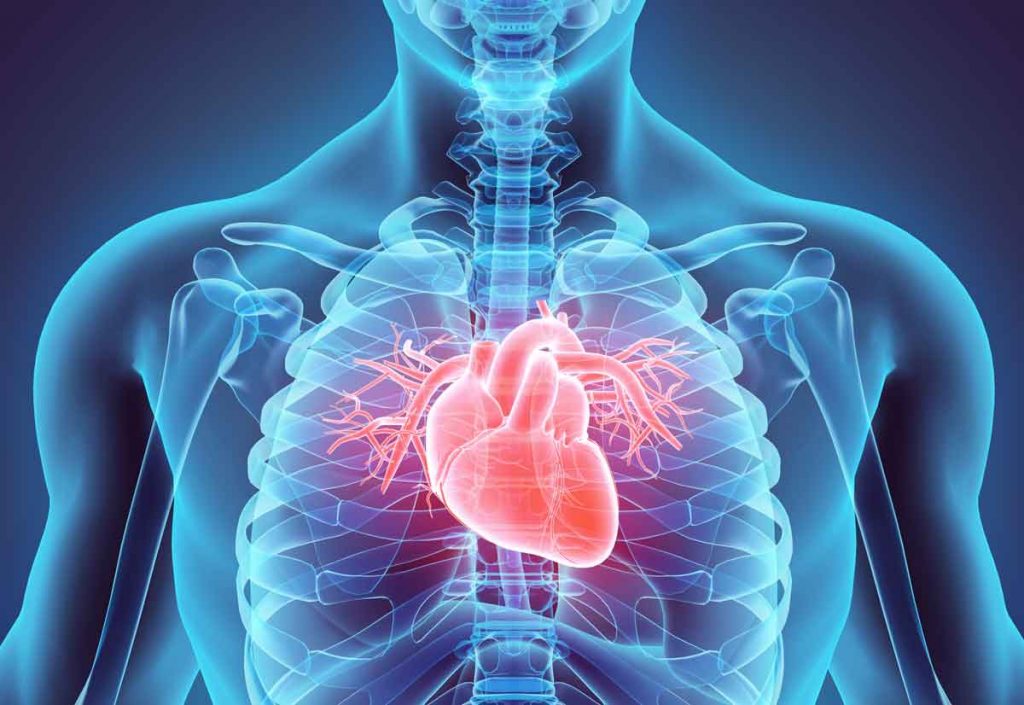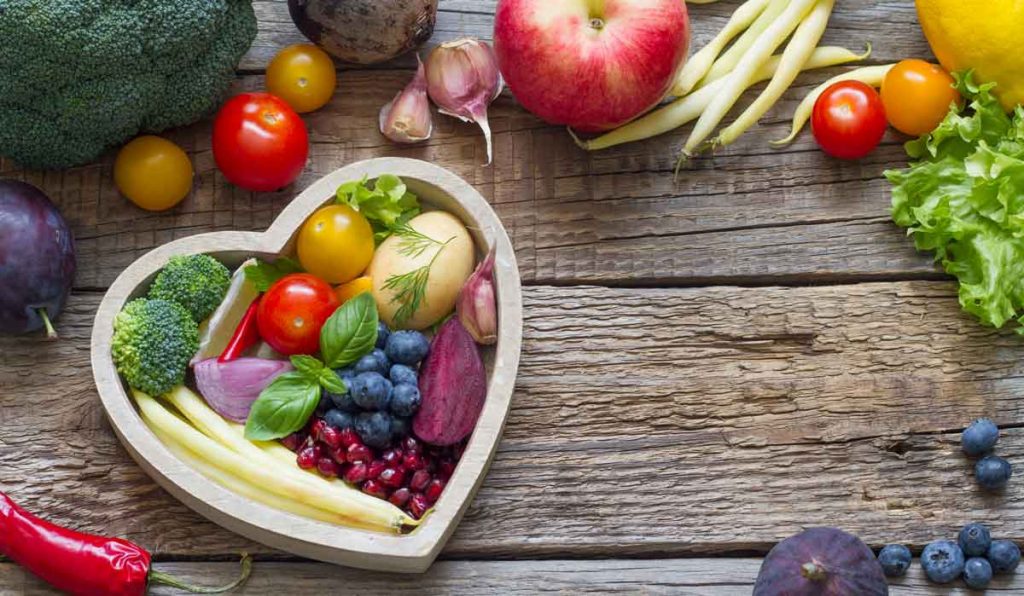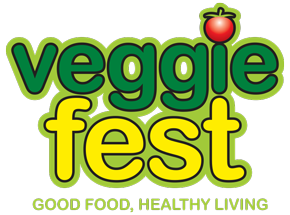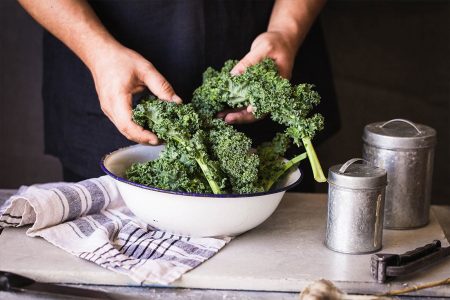Like many Americans, I have a family history of heart or cardiovascular disease. Growing up in a small town in northern Wisconsin with a dentist father who hunted and fished, we ate meat or fish daily. We didn’t have a TV until I was ten years old, so I was a bookworm. The public library was only two short blocks away, so I’d walk there even when it was below zero, which was common during the winter. That fueled my interest in other parts of the world.
When I was in college living in a dorm, eating meat no longer appealed to me. I worked at a restaurant in Madison that featured fresh vegetarian soups and offered some vegetarian entrées. Without even thinking about it, my meat consumption declined. During my senior year, I spent Easter weekend with my aunt and uncle who were caring for my grandfather. I ate Easter ham three meals in a row. It felt like I had a brick inside my gut! After that, I never ate red meat again, much to my German grandmother’s dismay.
My husband, Kevin, and I met as Peace Corps volunteers in Paraguay. It was so surprising to learn that he was also vegetarian! That’s where I grew to love beans and rice. After the Peace Corps, I went to nursing school in DC, where I became lacto-vegetarian (vegetarians who eat dairy). Since I’m from Wisconsin, on most days I ate an ounce of cheese (never Velveeta or processed – that’s not real cheese!). Kevin got a job overseas in Burkina Faso, a former French colony in Western Africa. We shipped over several ten-pound bags of dried beans (since most people ate meat there, if they could afford it). Our oldest son was born in Minneapolis. We took him to Burkina Faso when he was only four weeks old. He met my German grandmother when he was eight months old. I think that she stopped worrying about me after that, because she saw how healthy he was. We also lived in Guatemala, Rhode Island (where our middle son was born), and India (where our youngest son was born). Throughout three pregnancies, including nursing each of them until they were over a year old, I was lacto-vegetarian. Unfortunately, my German grandmother died at 87 years old of a heart attack, so she never met our youngest two sons.

Because different members of my family have dealt with CVD or cardiovascular disease, I became passionate about learning more in an effort to understand how I could avoid it and how I could help those I love. It’s sobering to read the statistics and to see members of my extended family develop CVD.
Heart Disease is Largely Preventable
Cardiovascular disease includes high blood pressure, coronary artery disease, heart attack/myocardial infarction, stroke, and heart failure. CVD is the leading cause of death in the US, accounting for 1 in every 4 deaths and a death every 37 seconds. Forty-eight percent of all adult Americans have CVD. This is a huge public and personal health problem for many of us.
Heart disease is also a significant cause of vascular dementia, the second most common type of dementia in the United States. Growing evidence links high blood pressure and CVD with Alzheimer’s disease: “Heart disease as well as cardiovascular risk factors, particularly if they manifest in midlife, are associated with the eventual development of dementia later in life” Journal of Clinical Epidemiology (2013: 5, 135-145). This makes sense as the brain is a very sensitive organ. Brain cells begin to die within several minutes without oxygen or glucose. What is good for the heart is also good for the brain!
The Center for Disease Control (CDC) reports that 80% of all CVD can be prevented. Isn’t this exciting? This can encourage and empower us to adopt a healthy lifestyle to dramatically reduce our risk of developing CVD. Interestingly, the way to avoid it or reverse it is to eat more vegetables and exercise moderately for half an hour at least five days a week. The new science of epigenetics studies how our internal and external environments act to turn on and off genes. Our diet and toxins are some of the influencers governing how our DNA is expressed. As Dr. Mark Menolascino has said, “Your genes are your potential, not your destiny.”
To combat or prevent CVD, we can start with the American Heart Association’s Simple 7 Guidelines:
- Manage Blood Pressure
- Control Cholesterol
- Reduce Blood Sugar
- Get Active
- Eat Better
- Lose Weight
- Stop Smoking
These directives assume that most of us are overweight, which is true. As of 2018, almost 40% of Americans were obese and over 70% overweight. It also is a recognition that as one ages while eating the Standard American Diet (SAD) and living a sedentary lifestyle, development of CVD is very likely. We see this same pattern of increased obesity and CVD in countries that have adopted a Western lifestyle and diet.
Before we get to the point where we have to act on those seven guidelines to prevent a health crisis, we can reduce our risk of obesity, high blood pressure, and high blood sugar by switching to a plant-based, whole food diet (PBWF) and exercising almost daily. As Dr. T. Colin Campbell explains in his very informative book, Whole: Rethinking the Science of Nutrition, our bodies have evolved with metabolic pathways that are very complex and depend on thousands of plant phytonutrients or phytochemicals. He and many other doctors consider nutrition to be the cornerstone of our health.

Green Leafy Vegetables are the Greatest
Ounce for ounce, calorie for calorie, vegetables are the most nutritionally dense foods that we can eat. They have all the vitamins and minerals that we need, including phytonutrients that are not available in supplements or any single “superfood.” Some vegetables, especially green leafy ones, contain nitric oxide, which is a vasodilator and helps maintain good cardiovascular health. The 1998 Nobel Prize in Medicine was awarded to researchers who discovered its important role in the body. A well-balanced PBWF diet will give us all the nutrients that we need (except Vitamin B-12):
- 6-11 servings of fruits and vegetables) including
- 2 serving of green leafy and 1 serving of cruciferous vegetables
- 3 servings of whole grains
- 3 servings of legumes or beans
- 1 serving of nuts or seeds.
A serving is usually 1/2 c. of food, but check the USDA MyPlate guidelines for more information. What’s so special about vegetables? They have a lot of fiber, which the average American doesn’t eat enough of, and special phytonutrients like anthocyanins, carotenoids, anthoxanthins, and chlorophyll. These are essential for optimal bodily function. They also include a higher percentage of the vitamins and minerals that are listed on food labels than any other food group. Fruits are another good source of vitamins, fiber, and some minerals, but they are not as nutritionally dense as vegetables.
Whole Grains and Whole Foods for Holistic Health
Whole grains were found to reduce high blood pressure as well as medication in a randomized, controlled trial. https://www.ncbi.nlm.nih.gov/pubmed/20685951 There are no adverse effects to using food, rather than drugs, for improved health. There are other benefits to eating more whole grains including more regular bowel habits, as well as a lower risk of CVD, colon cancer, weight gain, and Type 2 diabetes. Carbohydrates are essential for our body to function. Whole grains are the best source of carbohydrates, which are broken down into glucose (the fuel for every cell in our body).
How amazing is this! The only diet that has been shown to reverse coronary heart disease (CHD) is a PBWF diet. Nathan Pritikin, although not an M.D., was very smart and curious. He did his own research after being diagnosed with CHD at age 42 and became a vegetarian. After eradicating all signs of CHD, he started treating end-stage CHD clients with a mainly PBWF diet and exercise in the 60’s. Dr. Dean Ornish reversed atherosclerosis with the same lifestyle tools. The only three centers approved by Medicare for intensive cardiac rehabilitation (ICR) are the Pritikin ICR, the Ornish ICR, and the Bensen-Henry Institute in Boston. A panel of nutrition experts at US News and World Report ranked the Ornish diet as the most heart-healthy one.

Nine Steps towards Heart Health
If you’re not ready to switch to a PBWF diet, there are several steps that you can take now to improve your health and nutrition:
-
- Stop drinking soda, even diet sodas. The Cleveland Clinic says that diet soda consumption is associated with weight gain and can trick the brain and body into craving sweeter foods https://health.clevelandclinic.org/3-reasons-you-should-kick-your-diet-soda-habit/
- Eat at least one serving of a green, leafy vegetables daily (the darker, the better: think spinach, collards, kale, mustard greens), and eat four servings of cruciferous vegetables weekly (broccoli, cauliflower, cabbage, arugula, bok choy, brussels sprouts, kohlrabi, rutabaga, turnips, radish, wasabi).
- Eat less processed foods. They are high in fat, sodium, phosphates (which negatively affect calcium levels), sugar, additives, and preservatives. Many of these additives and preservatives are generally regarded as safe (GRAS) but their effects on human health haven’t been studied. Azodicarbonamide (ADA) (used as a whitening agent in cereal flour and as a dough conditioner), potassium bromate (often added to flour), and bromated vegetable oil (BVO, used in some citrus-flavored soft and sports drinks) are all banned in Europe due to concerns about being possible carcinogens. BHA and BHT are two common preservatives that are subject to severe restrictions in Europe but are widely used in the U.S.A. Yellow food dyes No. 5 and No. 6 and Red Dye No. 40 must carry a warning in Europe that they “may have an adverse effect on activity and attention in children” (NY Times, 12/28/2018).
- Eat at least three daily servings of whole grains, at least one that’s not wheat. Try barley, millet, and buckwheat groats for new tastes and more variety. When cooking rice, rinse it well and cook it with extra water, just like you would pasta, to reduce the trace amount of arsenic that may be present. Rice from California generally has a lower arsenic content than rice grown in other states.
- Walk at least thirty minutes a day at least five days a week. Almost everyone can walk, and exercise is recommended for everyone. Consult your M.D. if you have a CVD diagnosis before beginning an exercise program. Walk at a comfortable pace. Many people start an exercise program by pushing themselves intensely, but starting slowly and gradually increasing intensity and duration of exercise will help you incorporate exercise into your life while avoiding injuries and quitting.
- Get a physical exam as often as recommended by your M.D. That may vary depending on your age, gender, and personal health history. You and your M.D. are partners in the achievement of your personal health and wellbeing. You should feel respected and listened to by your M.D.
- Know your blood pressure, LDL, and fasting blood glucose values. Take preventive action when any of these numbers increases because high values predisposes you to developing CVD, as well as Type 2 diabetes.
- Maintain your weight in the normal range. Develop your own personal nutrition plan that incorporates green leafy and cruciferous vegetables, fruit, legumes and beans, whole grains, nuts, and seeds. Avoid fad diets or those that can’t be sustained for long periods of time, such as the many versions of the low carb, high fat diets (LCHF). Diets that omit processed foods are better than SAD, but that’s a low benchmark for comparison. Many studies that show short-term weight loss with these fad diets are funded by the meat and dairy industries. Long-term studies of LCHF diets show increased mortality, including from CVD. Remember that only a PBWF diet has been shown to reverse heart disease. The experts at US News and World Report ranked the Paleo, Keto, and Atkins diet in the bottom 20% of heart-healthy diets.
- Read, research, and apply what you learn about the link between nutrition and health. Don’t take it for granted that you will develop CVD if you have a family history of it. Don’t take it for granted that the chronic diseases associated with the Standard American Diet and sedentary lifestyles are inevitable.
All of these steps can help you reduce your risk of developing cardiovascular disease, the number one killer in our country today. You will feel better both physically and mentally.
Although a long-time lacto-vegetarian, I am working my way towards adopting a vegan diet. My husband and sons are all very active vegans, but I’m still a “cheese-head” in some ways. I think conscious change that evolves slowly and naturally is what works for me. The resources listed below have convinced me that a PBWF nutrition plan combined with exercise, is superior and will stave off CVD.
Resources
Here are some books for further reading:
- Prevent and Reverse Heart Disease: The Revolutionary, Scientifically Proven, Nutrition-Based Cure, Caldwell Esseltyn, Jr., M.D.
- Heart Solution for Women, Mark Menolascino, M.D.
- The End of Heart Disease, Joel Fuhrman, M.D.
- The Plant-Based Solution: America’s Healthy Heart Doc’s Plan to Power Your Heart, Joel Kahn, M.D.
- How Not to Die, Michael Greger, M.D.
- A Woman’s Guide to Living with Heart Disease, Carolyn Thomas
- Undo It! How Simple Lifestyle Changes Can Reverse Most Chronic Diseases by Dean Ornish, M.D.
Organizations and websites that have more information on PBWF diets include Physician’s Committee for Responsible Medicine, NutritionFacts.org, Center for Nutrition Studies, Forks over Knives, and Heartstrong.
~ by Monica Lidral, B.S.N., M.P.H. for the Veggie Fest Team
Monica Lidral is a retired public health nurse who has been a lacto-vegetarian for almost 40 years. She graduated from UW-Madison with a BSN in medical microbiology. Upon realizing that she’d like a more people-oriented career, she joined the Peace Corps and was sent to Paraguay where she worked as a rural health educator. After the Peace Corps, she earned a BSN from The Catholic University of America. She went on to study for an MPH in Public Health Nursing at the University of Minnesota – Twin Cities. She and her vegan husband have raised three young men who are lifelong vegetarians and are now all healthy, active vegans.







